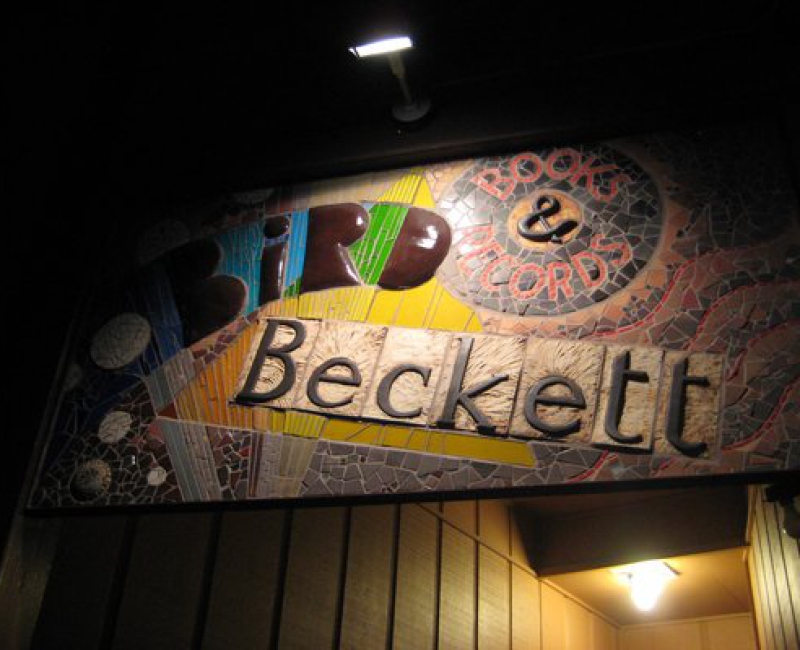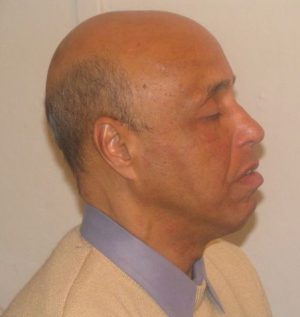653 Chenery Street
in San Francisco's Glen Park neighborhood
1-415-586-3733
[email protected]
Open to walk-in trade and browsing
Tuesday to Sunday
noon to six
Live Streams every weekend!
Refresh your browser to catch a show in progress!
Visit our Facebook page or YouTube channel!
But nothing beats being in the room with the music & the musicians!
Bliss Rodriguez, piano
Erik von Buchau, vibes
Myron Cohen, drums
Pianist Bliss Rodriguez was born in NYC on April 2, 1945 to Dominican immigrant parents. He grew up in Hamilton Heights, between Harlem and Washington Heights, on the west side. Bliss was born visually impaired, having no vision in his right eye and partial sight in his left, becoming completely blind at the age of 17.
As a child, Bliss attended the only school in NY at the time for the visually impaired, a Catholic grammar school run by nuns. The sisters wanted their charges to be well rounded, so as a child Bliss received ballroom, tap dance, music and drama lessons in addition to a standard primary education. His parents bought him a piano at age nine, and he began playing it by ear.
By high school he met fellow musician José Feliciano, and together they formed an instrumental trio (guitar, piano and drums.) They gravitated musically to whatever was popular on the radio at the time: jazz-influenced pop tunes like “Back Home in Indiana” and “Steppin’ Out With My Baby,” as well as R&B and early rock and roll melodies championed by the likes of Chuck Berry and Jerry Lee Lewis. As The Modern Sound Trio, they got their fifteen minutes of fame in 1962 when they appeared on television’s “The Amateur Hour†hosted by Ted Mack, before Feliciano was “discovered†and went on to his own pop recording career.
[arve url=”https://www.youtube.com/watch?v=3njgYH0nL34″ /]
Bliss’ musical world was turned on it’s ear about that time, at the age of seventeen, when he first heard John Coltrane’s “My Favorite Things” and Bill Evans’ classically informed jazz harmonies. He would never again hear or create music in the same way.
After high school he spent two years taking classes at Julliard and studying privately with John Mehegan, before entering the Mannes College of Music in 1964. There he studied music history, theory, and keyboard harmony with Jerome Bronstein, among others, before graduating in 1969 with a BS in Music. Still hungry for more education, Bliss entered the Masters of Music program at SUNY’s Harpur College at Binghamton in 1970 ( now called University of Binghamton), where he concentrated in Performance and Composition. Before he completed his degree two years later, he had played in their jazz laboratories with visiting artists such as Slam Stewart, Frank Wess, Manny Albam and Eddie Daniels.
Following his graduation and restless with his life in New York, Bliss set out with a college friend on a lark to what was then the “land of opportunity,” oil-rich Houston, Texas. It was there he met up and coming Texarkana-bred jazz vocalist Roseanna Vitro. Together they formed a working jazz quartet – which broadcast live for three years from a nightly gig at the Green Room – and a lifelong friendship. When his sojourn in Houston had run its course, the peripatetic pianist found himself moving to Los Angeles, back to New York’s Greenwich Village, and finally, in 1986, to San Francisco, where he currently makes his home.
Here in the Bay Area, Bliss has supported himself playing his unique, densely harmonic brand of solo jazz piano, as well as performing with local jazz artists such as Laurie Antonioli, Robin Gregory, flautist Barbara Hunter, trumpeter Graham Bruce, vocalist Sherri Roberts, bassist Ron Crotty (with whom Bliss appeared for 10 years at the Oakland Museum Café) and the inimitable pianist Earl “Fatha†Hines.
And here, in the video below, he’s heard to good effect with vocalist Roberts from a 2013 performance at San Francisco’s Chez Hanny:
[arve url=”https://www.youtube.com/watch?v=teGIpn3CKxs” /]
As a musician, Bliss’ principal concern is with an aspect of creativity and improvisation: how to be continually creative within the context of any given moment and how to allow an unimpeded stream of musical ideas to flow forth. He considers among his major jazz influences, first and foremost, Keith Jarrett, as well as Fred Hersh, Kenny Wheeler, Charles Lloyd, Joe Chambers, Clare Fischer and arrangers Gil Evans, Nelson Riddle, Claus Ogerman and Gordon Jenkins. He draws musical inspiration from many other non-jazz sources: Rennaissance composer Carlo Gesualdo and twelve tone composer Arnold Schoenburg, J.S Bach and Sibelious, Aaron Copeland and the song stylings of Judy Garland, Rosemary Clooney and Jack Jones. In spite of, or perhaps because of, the immense and highly complex musical palette he draws from, Mr. Rodriguez has, over time, come to appreciate the art of “paring down†his pianistic instincts to their simpler core, often in the service of accompanying first-rate singers – those who perform the repertoire of his earliest aural memories: the American Songbook, Hollywood musicals and timeless jazz standards.
TAKE OUR SURVEY
To take our SURVEY, click here, and help the BBCLP get to know you better! As Duke Ellington always said, we love you madly...
The Bird & Beckett Cultural Legacy Project

Our events are put on under the umbrella of the nonprofit Bird & Beckett Cultural Legacy Project (the "BBCLP"). That's how we fund our ambitious schedule of 300 or so concerts and literary events every year.
The BBCLP is a 501(c)(3) non-profit...
[Read More ]
The Independent Musicians Alliance
Gigging musicians! You have nothing to lose but your lack of a collective voice to achieve fair wages for your work!
The IMA can be a conduit for you, if you join in to make it work.
https://www.independentmusiciansalliance.org/
Read more here - Andy Gilbert's Feb 25 article about the IMA from KQED's site




